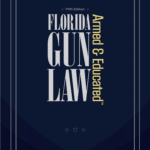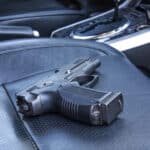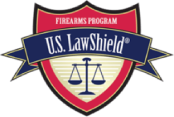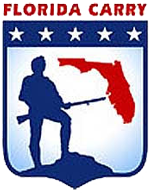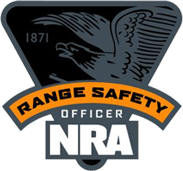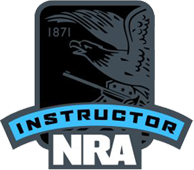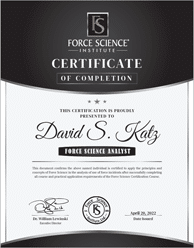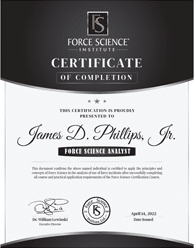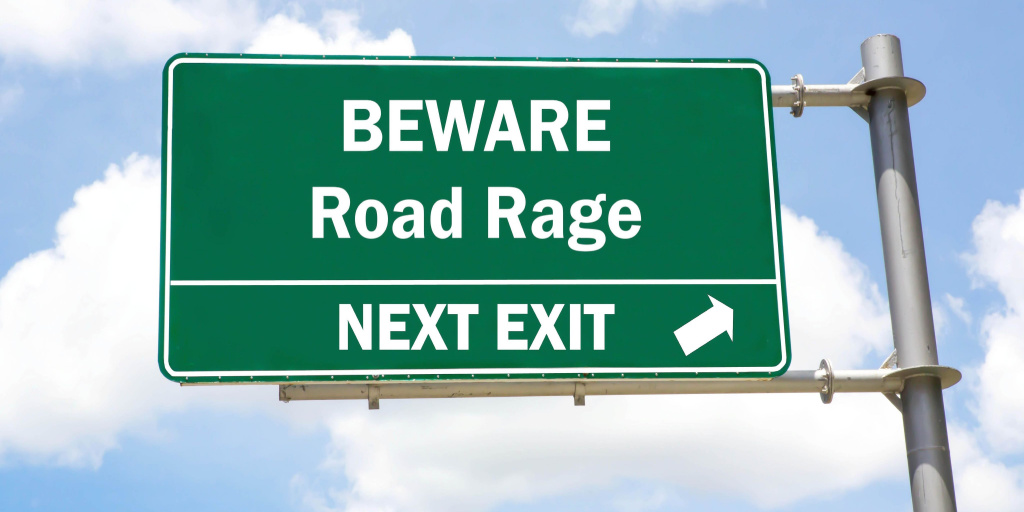
- August 01, 2022
- |
- Car carry,Road Rage,Self Defense,Use of Force
Road Rage – The #1 Reason Gun Owners are Getting Arrested
By: David S. Katz & James D. Phillips
Time and time again, we get the call. An individual was in a road rage incident and has been arrested, accused of pulling and waiving a firearm at the other driver. Recently, a Crestview woman was arrested after she was accused of pulling a gun on a car filled with children in a road rage incident. So, are the accusations always true? No, but too often they are.
How a Road Rage Incident Starts
At the Firearm Firm, we are for responsible gun ownership. We spend an extraordinary amount of time teaching people when they can and cannot display their firearm. Today, we are going to focus on the ROAD RAGE situation. I admit, that I occasionally allow myself to get sucked into the bottomless pit of rage that is caused by others on the roads. Just this morning, I had to keep myself from escalating a situation further that I had (out of character) reacted to. I was sitting at a red light about to make a turn. The light changed color and I began to move forward. The car behind me honked, apparently, I was not moving fast enough for them. What did I do? Did I ignore them? I am embarrassed to admit that I did not. I almost always ignore people like this, but this morning, for some reason, it struck a nerve. I SLOWED down after I made the turn.
Road Rage Incidents can Escalate Quickly
The driver behind reacted. They hit their horn and through their hands up in frustration. I imitated their reaction. They flipped me off. I upped the ante and showed them both of my middle fingers. I then realized that I was putting myself in a dangerous situation, that I have often told my kids to avoid, for no reason at all. I sped up, let them get the last honk in and then drove normally, keeping an eye on them to make sure the situation would not escalate further. What I should have done is allowed them to vent their frustration by honking at me (for no reason at all) and driven on. So what that they honked at me. Maybe they were having a bad day. Did I really need to get into a pissing contest with this stranger on the way to work? No, I did not!
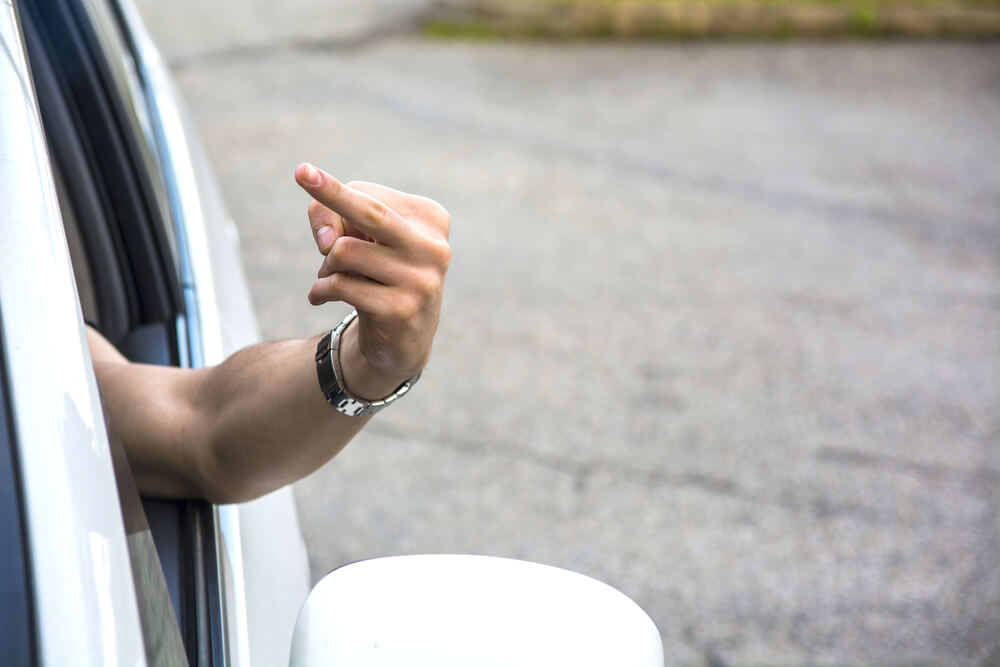
Taking a Deep Breath and Moving on With your Day
To often, people let their pride and their emotions take over. They make decisions that cause events that could and should have been avoided. Could the situation above have devolved quickly? Yes! Thankfully, I realized what I was doing and how unnecessary it was to prove to this stranger that I was dumber than they were. Fortunately, apparently they also were not interested in the honking and slow driving events from going further, but they easily could have. They could have decided to try to speed past me over the double yellow lines then cut in front of me and slam on their brakes. I could in turn have decided to speed up and not let them in, causing them to have a head on collision with oncoming traffic that had nothing to do with our little spat. Maybe, to show their dominance, they might display a gun. In return, I might pull mine and shoot them. It happens. Just last month two armed men confronted each other, one with a knife and the other with brass knuckles and a gun. Just last week a man died when he and another man got out of their cars in a parking lot over a road rage incident and a single punch was thrown.
Can You Defend Yourself in a Road Rage Incident?
Unfortunately, there is no universal answer to this question. It all depends on the facts surrounding that specific situation and the slightest change in the facts could drastically alter the answer to this question. This is exactly why it is crucial to be educated on the law regarding self-defense. Just look at the real life scenario involving our client, Mitch Davis, who was forced to draw a firearm to defend himself in a road rage incident which we wrote about last month.
There are definitely times when force, including deadly force is appropriate and necessary. So, how do you know what level of force you can legally use and when you should use it? To keep from having hassles with law-enforcement and entanglements with the court system, it is always best to avoid using any kind force until you have no choice. Based on the situation, you will have to judge for yourself when your safety is at risk, but the law allows you to defend yourself without retreating in most circumstances in Florida.
Using Force in a Road Rage Incident
What is force under Florida law? There is no specific definition of “force” in Florida’s “Justifiable Use of Force” chapter. (Florida Statutes §776.012(1)). Florida Standard Criminal Jury Instruction 3.6(g) defines non-deadly force as “force not likely to cause death or great bodily harm.” If we boil this definition down, force may be described as unwanted physical contact that will not cause a person to die or sustain great bodily harm. Now that we know what force means, let’s look at when Florida law allows us to use force.
According to Florida Statutes §776.012(1), “A person is justified in using or threatening to use force, except deadly force, against another when and to the extent that the person reasonably believes that such conduct is necessary to defend himself or herself or another against the other’s imminent use of unlawful force.” While driving down the road, if both drivers and their passengers remain in their vehicles, it is hard to see when defensive force would be allowed. Honking a horn obnoxiously, yelling, screaming, or calling names, does not rise to the level of force and does not allow one to respond with force in most situations.
In these situations, if the other driver seems to be loosing control and the situation seems to be escalating, despite your lack of response, the best thing to do is call the police while the situation is occurring. You can describe the other driver’s actions to 911 and make a record of their behavior. This will help to ensure that if an arrest is made, it is the correct person arrested. It will also get the police moving toward you at the soonest opportunity, in case something physical does occur. Further, this can be a crucial piece of evidence if the other driver decides to call 911 and fabricate a story. it establishes you as the victim early on. Finally, if you have a passenger in the vehicle, have that person record the other driver.
Using Deadly Force in a Road Rage Incident
How does Florida law define deadly force? Just like there is no definition of “force” in Florida’s “Justifiable Use of Force” chapter there is no specific definition of deadly force. (Florida Statutes §776.012(2)). Florida Standard Criminal Jury Instruction 3.6(f) defines deadly force as “force likely to cause death or great bodily harm.” Although defining what constitutes death is not needed, not everyone knows what constitutes great bodily harm. Great bodily harm means “great as distinguished from slight, trivial, minor, or moderate harm, and as such does not include mere bruises.” Fla. Std. Jury Instr. Crim. 3.6(f). Ultimately what constitutes great bodily harm is a question for the fact finder, judge or jury, to decide.
According to Florida Statutes §776.012(2), “A person is justified in using or threatening to use deadly force if he or she reasonably believes that using or threatening to use such force is necessary to prevent imminent death or great bodily harm to himself or herself or another or to prevent the imminent commission of a forcible felony.” Florida Statute §776.08 list all the crimes that are recognized as forcible felonies under the law, such as murder, aggravated battery, manslaughter, etc. Although fear of death or great bodily harm is not required prior to using deadly force to prevent a forcible felony, a person who is the victim of a forcible felony will usually also be in a position that a reasonable person would believe death or great bodily harm was imminent.
The most obvious road rage example in which either the use or threaten use of deadly force would be justifiable is when the other vehicle begins ramming your car and trying to run you off the road with their car. Another obvious situation would be if the other person points a gun at you or discharges the firearm at or into your vehicle. In both of those examples, it would be reasonable to believe deadly force is needed to prevent imminent death or great bodily harm to you and to prevent a forcible felony. However, if you are firing your gun in response to a person swerving into your lane who does not contact your vehicle, you will have to convince authorities and likely a jury that it happened and that is why you fired. As the person who pulled the gun you are likely to be the one arrested, especially if there has been no contact between the vehicles. Many people are under the false belief that anytime another person is making a threat with a weapon such as a baseball bat or knife that it automatically rises to the level that he or she can use deadly force to defend themselves. That is not always true and is especially not true in a road rage scenario where both individuals are in separate vehicles and driving down the road. Why? It all comes down to the word “imminent.” Florida courts have determined that “imminent encompasses a narrower time frame and means ‘impending’ and ‘about to occur’.” E.M.A. v. Department of Children and Families, 795 So. 2d 183 (Fla. 1st DCA 2001). When a person in another vehicle is driving down the road and flashes a knife or baseball bat in a threatening manner to you while you are inside your vehicle, there is no imminency. You may be wondering then why deadly force would be justified when a gun is pointed directly at you or your vehicle? A gun can project a bullet that can travel from inside one car into another, making the potential for death or great bodily harm imminent.
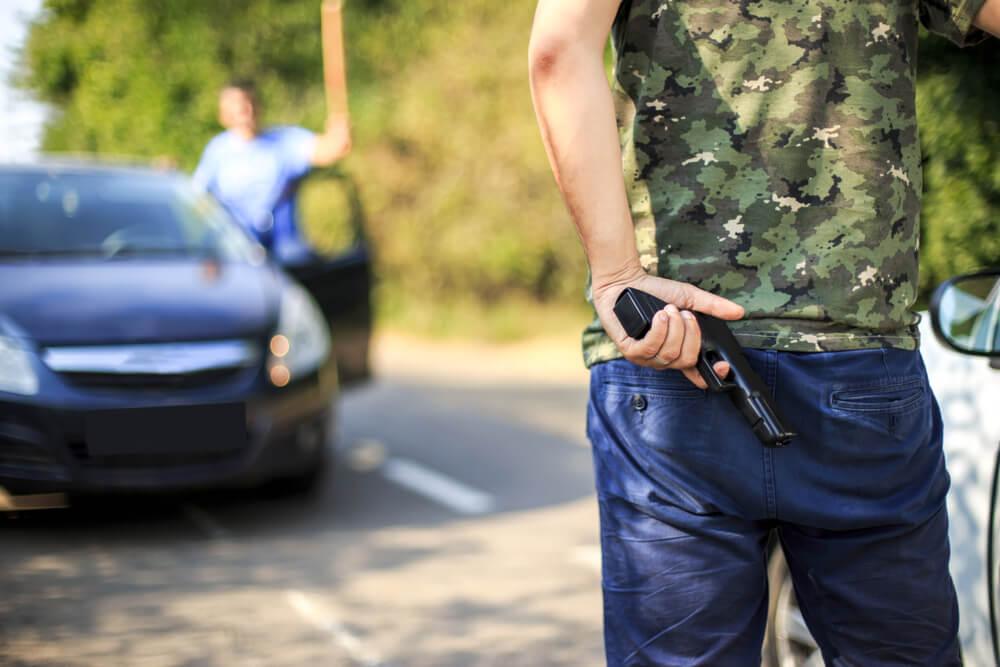
If You Must Display a Firearm
Florida law as discussed above allows you to answer illegal force with defensive force, but you can only use a reasonable amount of force in response. With that in mind, before we can discuss whether or not you can display your firearm in response to another’s illegal use of force, we must first decide what level of force displaying a firearm is considered under Florida law. This once was a simple answer but due to recent court decisions the answer now varies based the location in the state where the firearm was displayed in self-defense. Prior to 2020, Florida case law had uniformly determined that the display of a firearm without discharging it was considered the use of force as a matter of law. This would allow a person to display a firearm as a form of non-deadly force anywhere in the State of Florida. This changed when the Fourth District Court of Appeals published its ruling in Little v. State, 302 So. 3d 396 (Fla. 4th DCA 2020), finding that the display of a firearm is a threat of deadly force. Since the court found it was a threat of deadly force, it could only be done in response to the use of deadly force or a threat of deadly force from another person. (Please click here, for a detailed discussion of the Little decision and its impact on the law.) Other jurisdictions in the state still consider the display of a firearm to be the use of non-deadly force. Therefore you must know the law of the jurisdiction you are in, anytime you decide to display a firearm as an answer to non-deadly force. If you are displaying a firearm in response to a deadly force encounter or a forcible felony then where you are located in the state does not matter.
It Only Takes an Accusation!
Often, those involved in road rage incidents are accused of having displayed or pointed a firearm at the other driver. Unfortunately, this is Florida and most people have a firearm in their car. When one driver in a road rage incident calls the police and says, “he waved a gun in the air,” or “he pointed a gun at me” the police MUST and will respond. When they stop the other car and find a firearm in it, suddenly the accusation is believed, even if it has no basis in reality. We have received calls from numerous people who denied displaying a firearm during a road rage incident but were accused by the other driver and arrested when the police found a gun in their possession. This is why we generally discourage people from having stickers on their vehicles displaying their preference of firearms, such as a Glock decal, or anything else that would cause another person to believe there is likely a firearm in the vehicle. We have also received the same call from people who have never owned or handled a firearm, but were none-the-less falsely accused of pointing a firearm at another during a road rage incident.
De-escalation is the Best Solution for Road Rage
Right or wrong does not really matter in the long term. Sure it feels good to let someone who cut you off know how you feel about them, but in the long term, getting where you are going safely and returning to your family at the end of the day are what matter most. Let it go! That momentary satisfaction of yelling at someone whose driving at the very least needs improvement and whose attitude is less than it should be will never take the place of seeing your kids that evening. Although it is difficult, remember, the consequences, whether or not you have done anything wrong, are just not worth the risk to your freedom or your life.
Road Rage Incidents and Firearms in Florida
In this video, Attorney James Phillips explains what you need to know about road rage incidents and when you can use your firearm in Florida. If you have any specific questions, please feel free to reach out by submitting your question for us to answer with the form on the right or contact our firm to discuss your issue.
Get in touch

"*" indicates required fields
Copyright © 2022-2025 The Firearm Firm All rights reserved.

